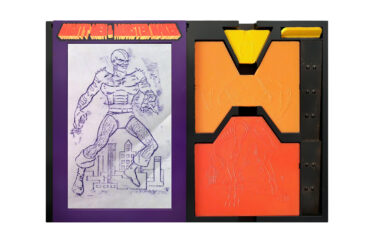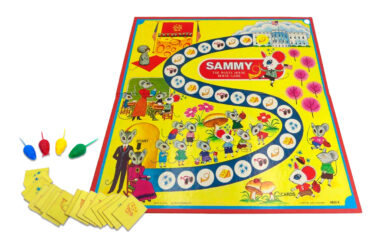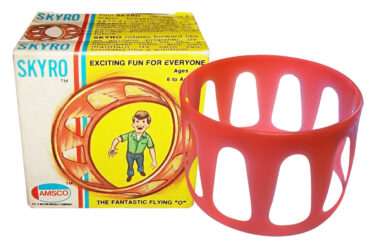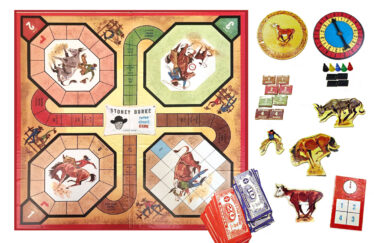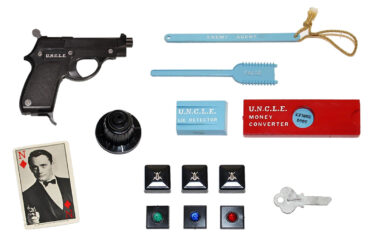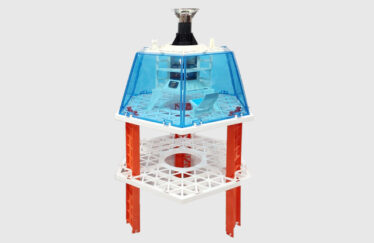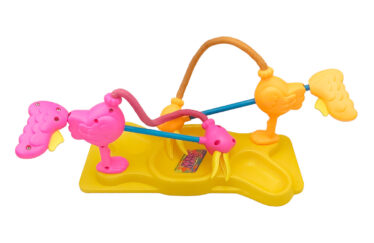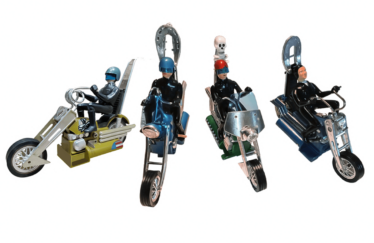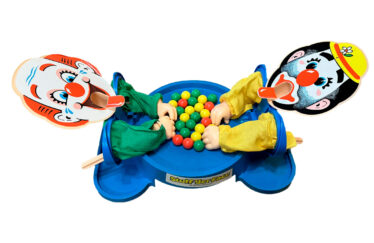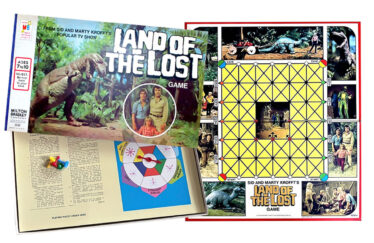
Mighty Men & Monster Maker from TOMY (1979)
Released in 1979 from TOMY, Mighty Men & Monster Maker allowed children to create their own unique “super-guys” and monsters using interchangeable plates, paper, and coloured pencils.
Tabletop Games, Vintage Toys & Games
Sammy the White House Mouse Game from Parker Brothers (1977)
Published by Parker Brothers in 1977, the Sammy the White House Mouse Game saw players race mouse pawns along a path to the White House.
Skyro from Amsco (1975)
Amidst the rising popularity of frisbee as an outdoor, family-friendly game, Amsco introduced Skyro, its own variant on the flying disc.
Stoney Burke Rodeo Circuit Game from Transogram (1963)
Released in 1963 by Transogram, the Stoney Burke Rodeo Circuit Game was based on the ABC television series Stoney Burke, which aired from 1962 to 1963.
The Man From U.N.C.L.E. Spy Magic Tricks from Gilbert (1965)
Released in 1965 from Gilbert, the Man from U.N.C.L.E. Spy Magic Tricks playset used the mystery and intrigue of the television show as the backdrop for a toy that allowed children to perform sleights of hand and emulate secret-agent techniques.
Otherworldly, Vintage Toys & Games
Fang Bang from Milton Bradley (1967)
If Hunger Games-esque free-for-alls are your thing, you’ll probably want to look for the quirky Fang Bang game released by Milton Bradley in 1967.
Major Matt Mason Space Station from Mattel (1966)
Released in 1966 from Mattel, the Major Matt Mason playset jettisoned children’s imaginations into outer space where they could dream of exploring uncharted realms.
Tabletop Games, Vintage Toys & Games
Early Birds from Parker Brothers (1989)
Released by Parker Brothers in 1989, the Early Birds game was a lively race to be the player to collect plastic worms using their Early Bird.
Scream’n Demons from Hasbro (1971)
Released in 1971, Scream’n Demons was a line of fast-moving motorcycle toys from Hasbro that was heavily influenced by the popularity of biker movies and culture at the time.
Tabletop Games, Vintage Toys & Games
Stuff Yer Face from Milton Bradley (1982)
Released by Milton Bradley in 1982, Stuff Yer Face used two clown puppets as the central characters in a battle to see who could consume the most marbles.
The Power of Imagination: My Fascination with Ray Guns
Leslie Singer, author of Zap! Ray Gun Classics, explores the visionary world of vintage ray guns, toys that fueled a generation’s fascination with space.
Tabletop Games, Vintage Toys & Games
Land of the Lost from Milton Bradley (1975)
Released in 1975 from Milton Bradley, the Land of the Lost board game was adapted from the Sid and Marty Krofft science-fantasy television series that ran from 1974-1976.

